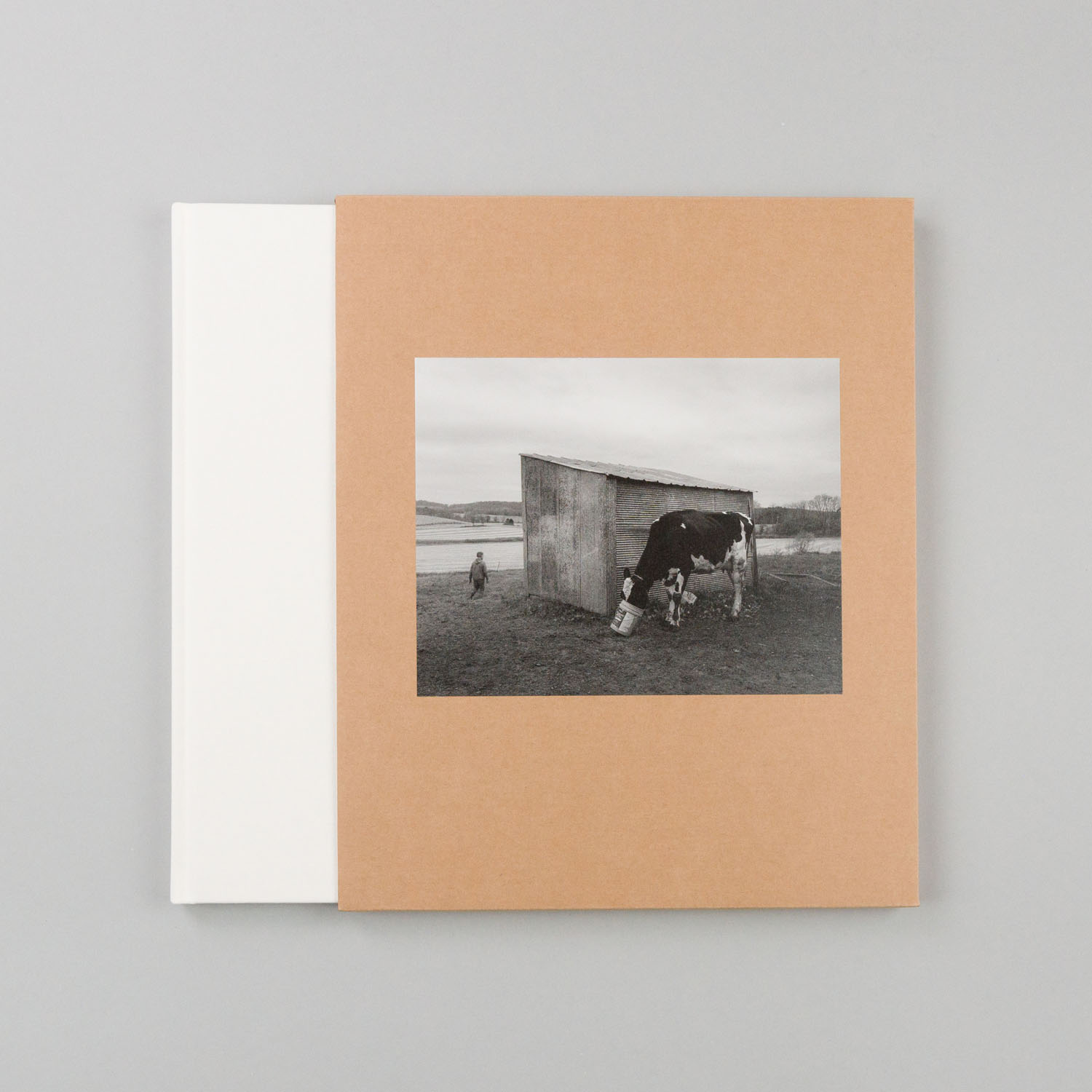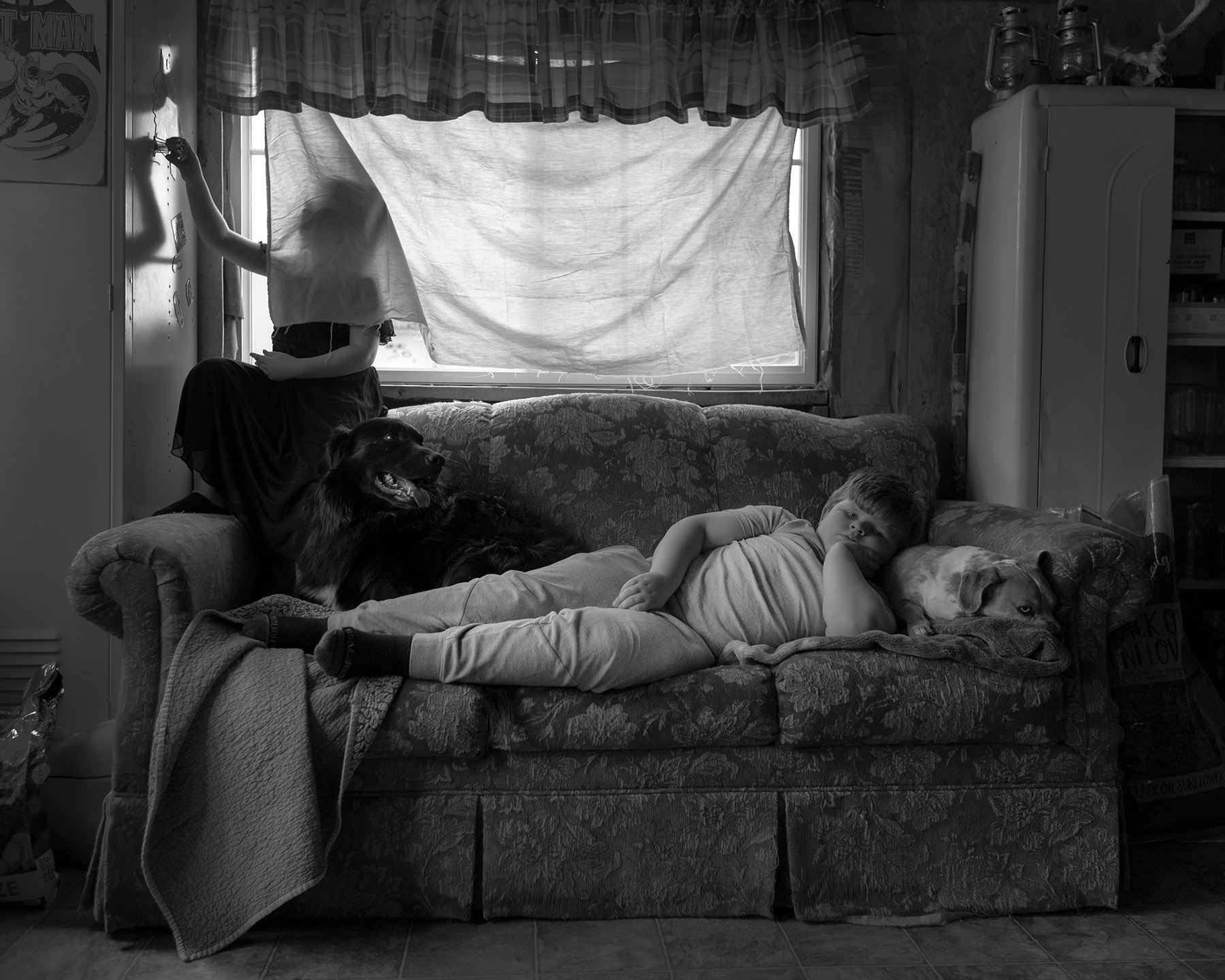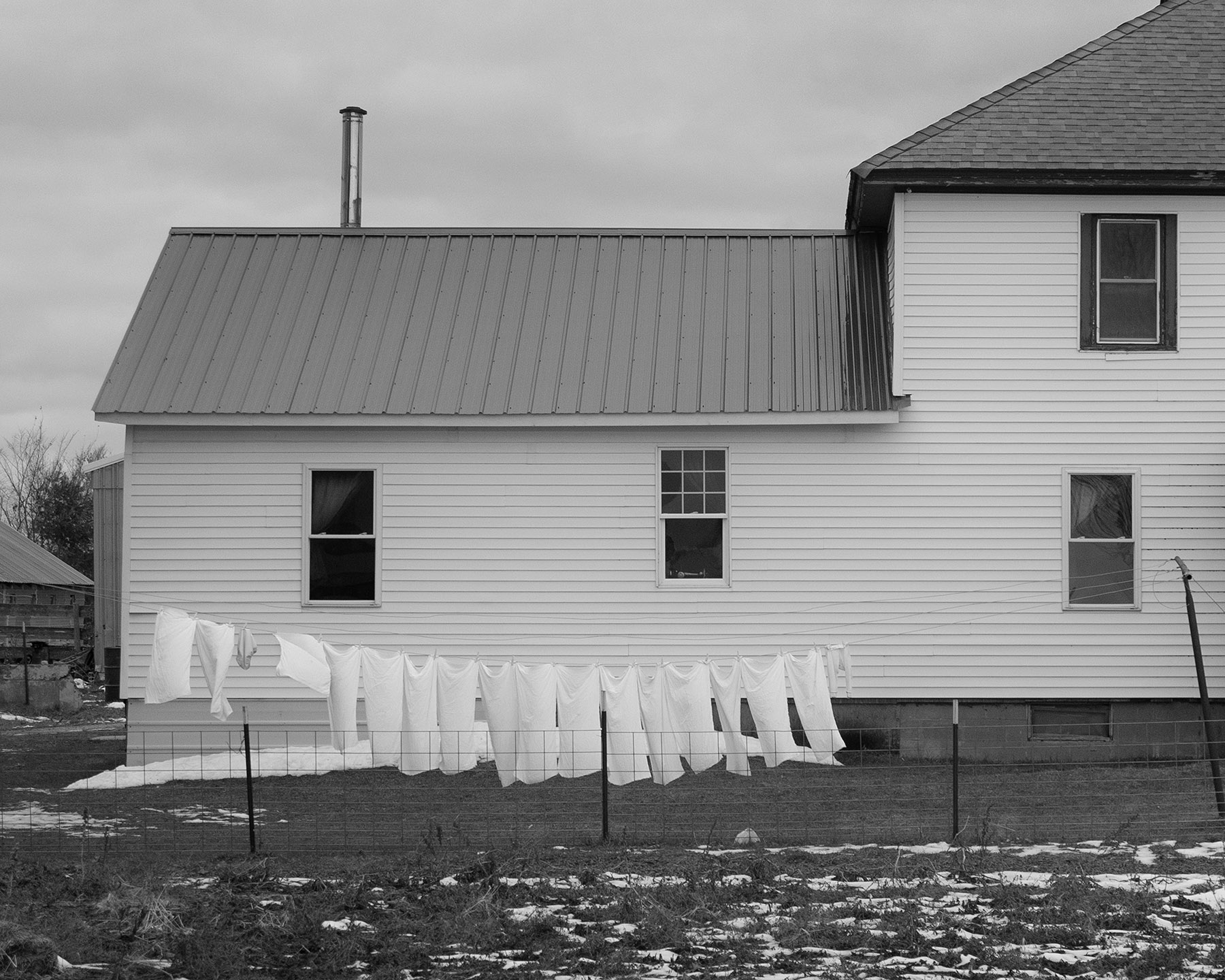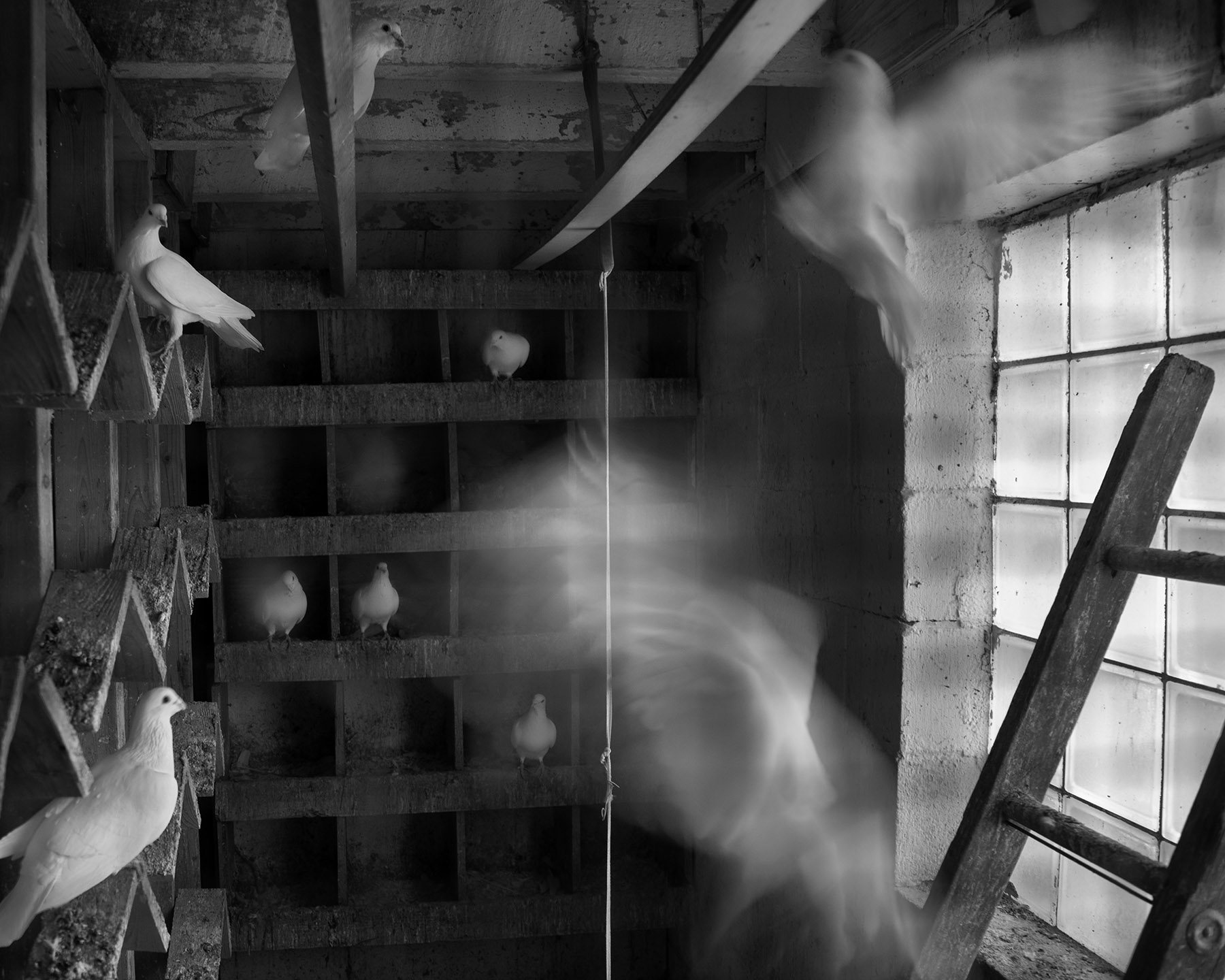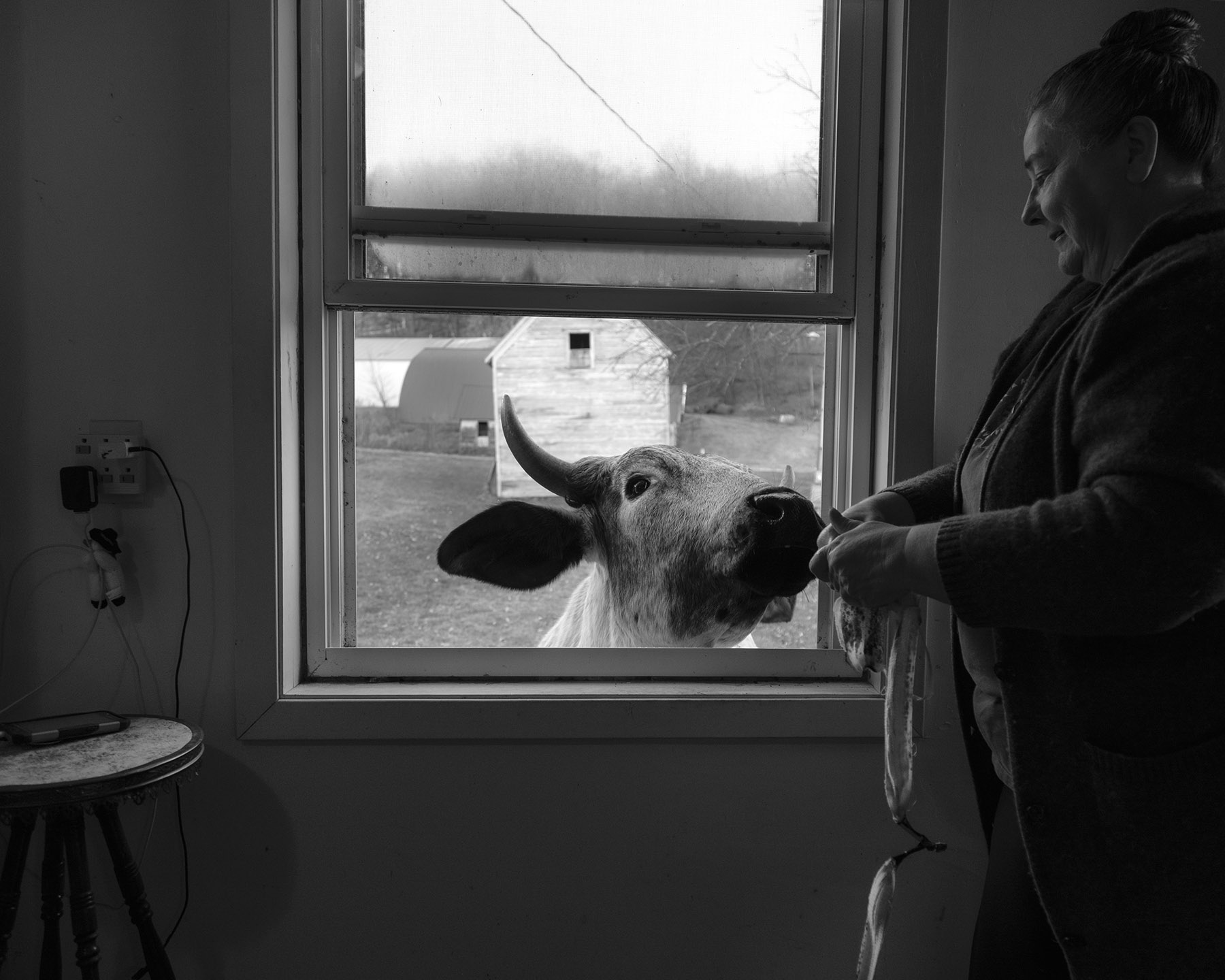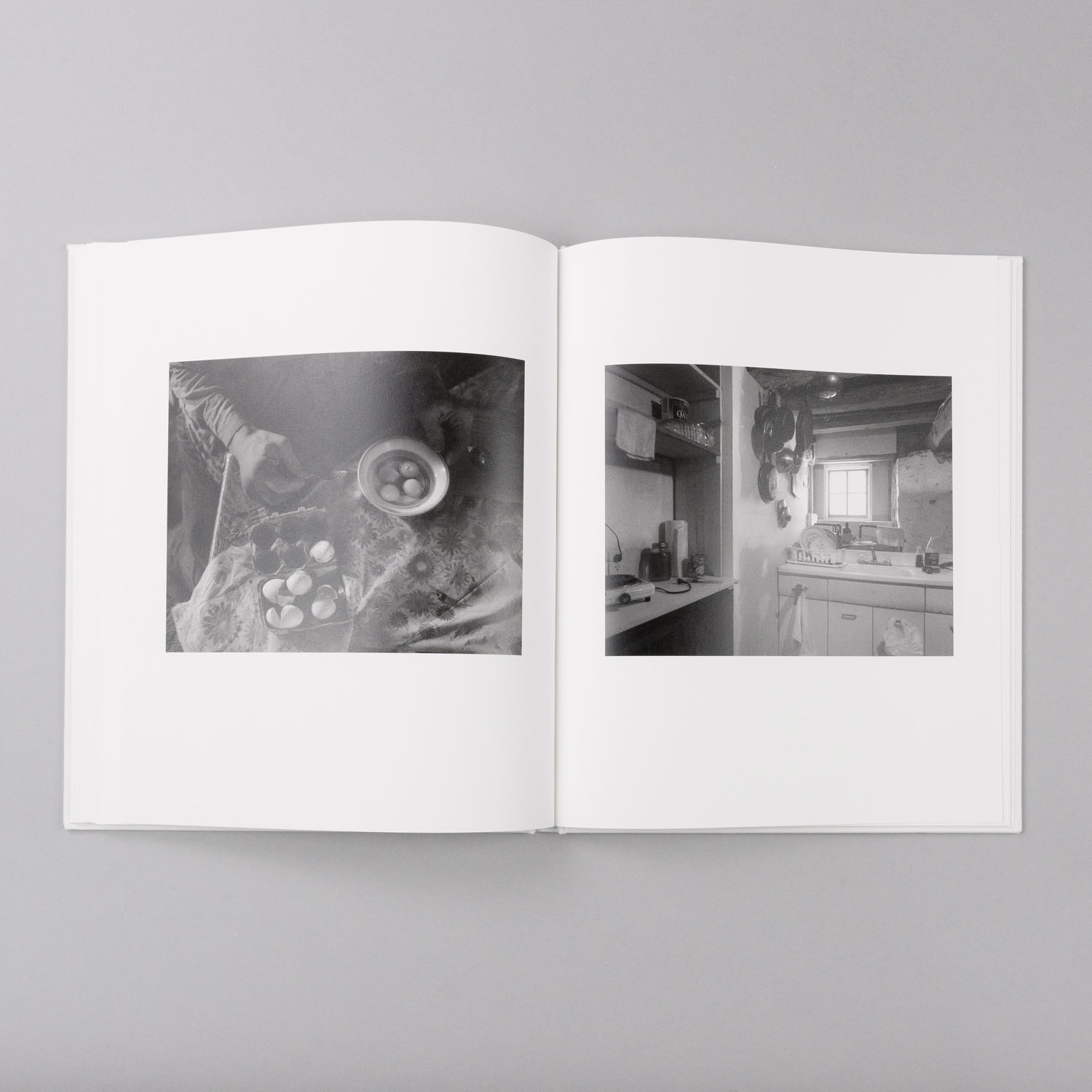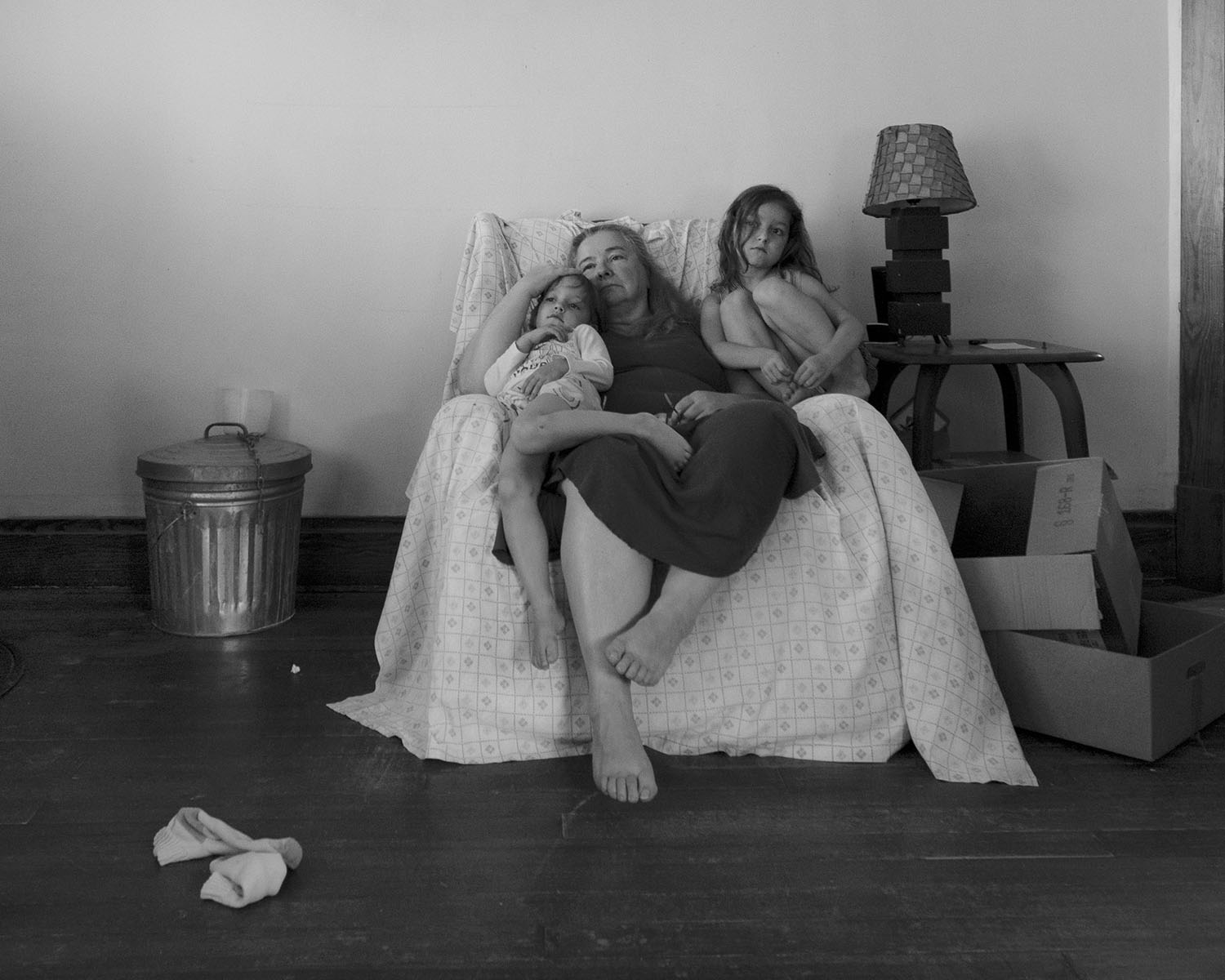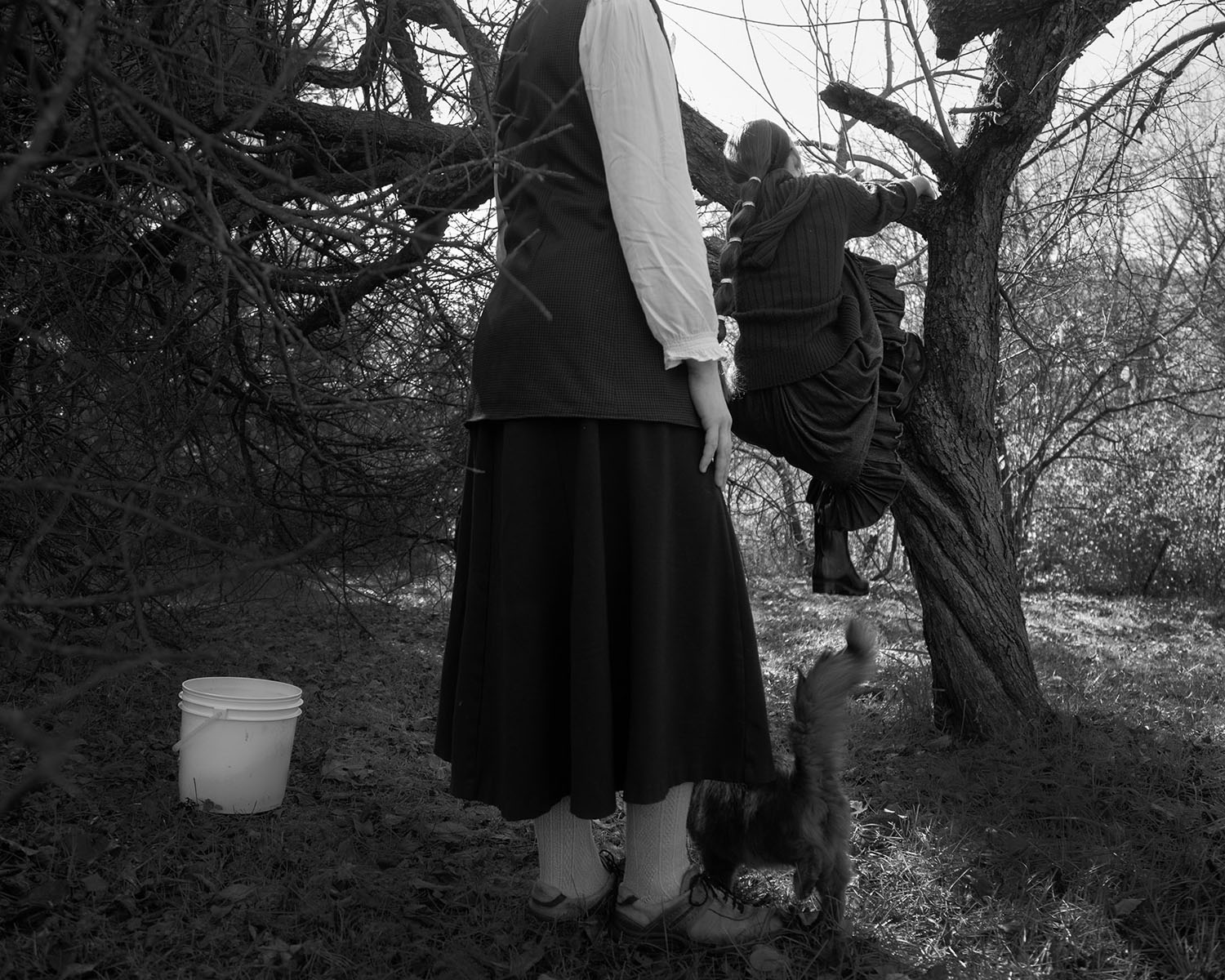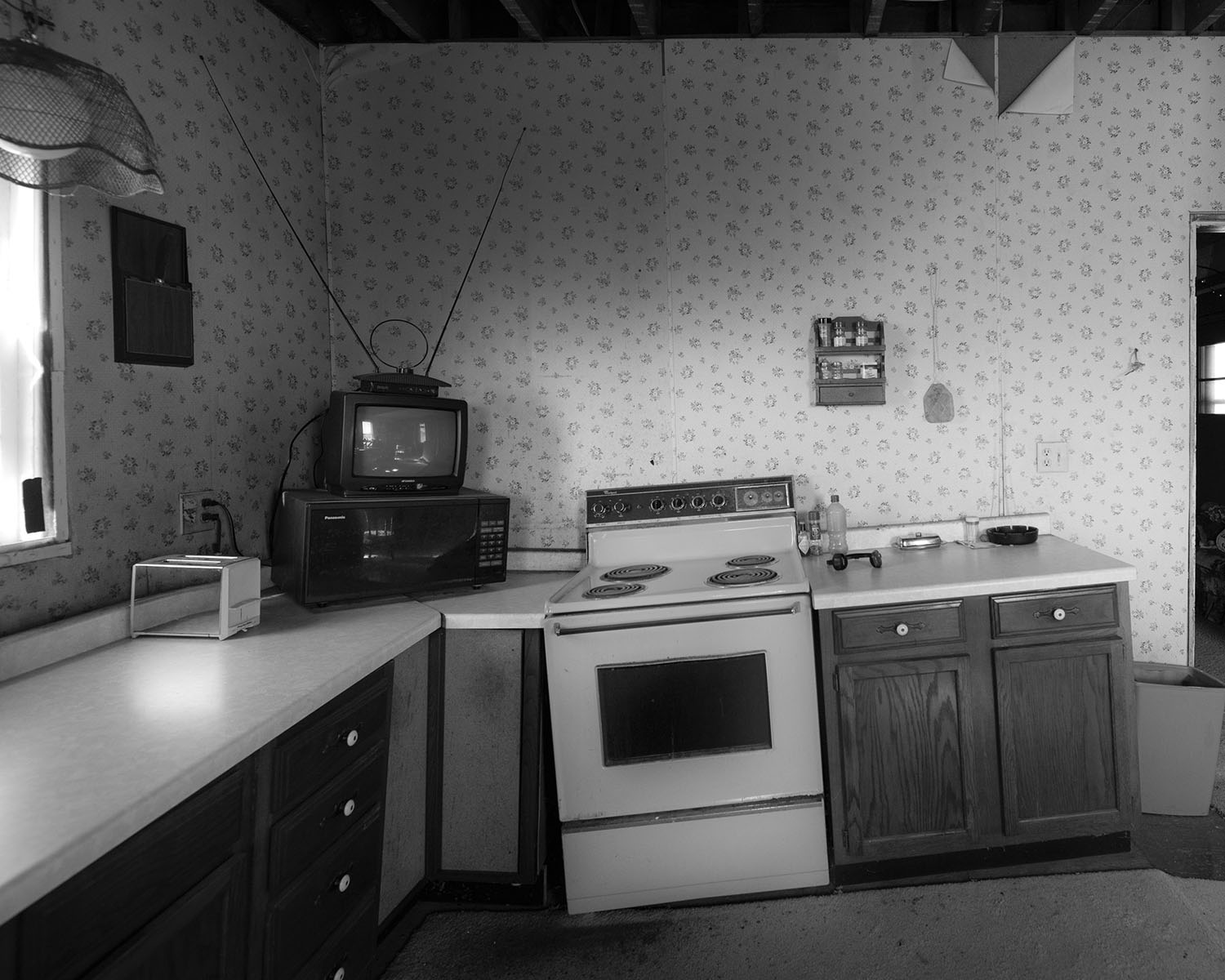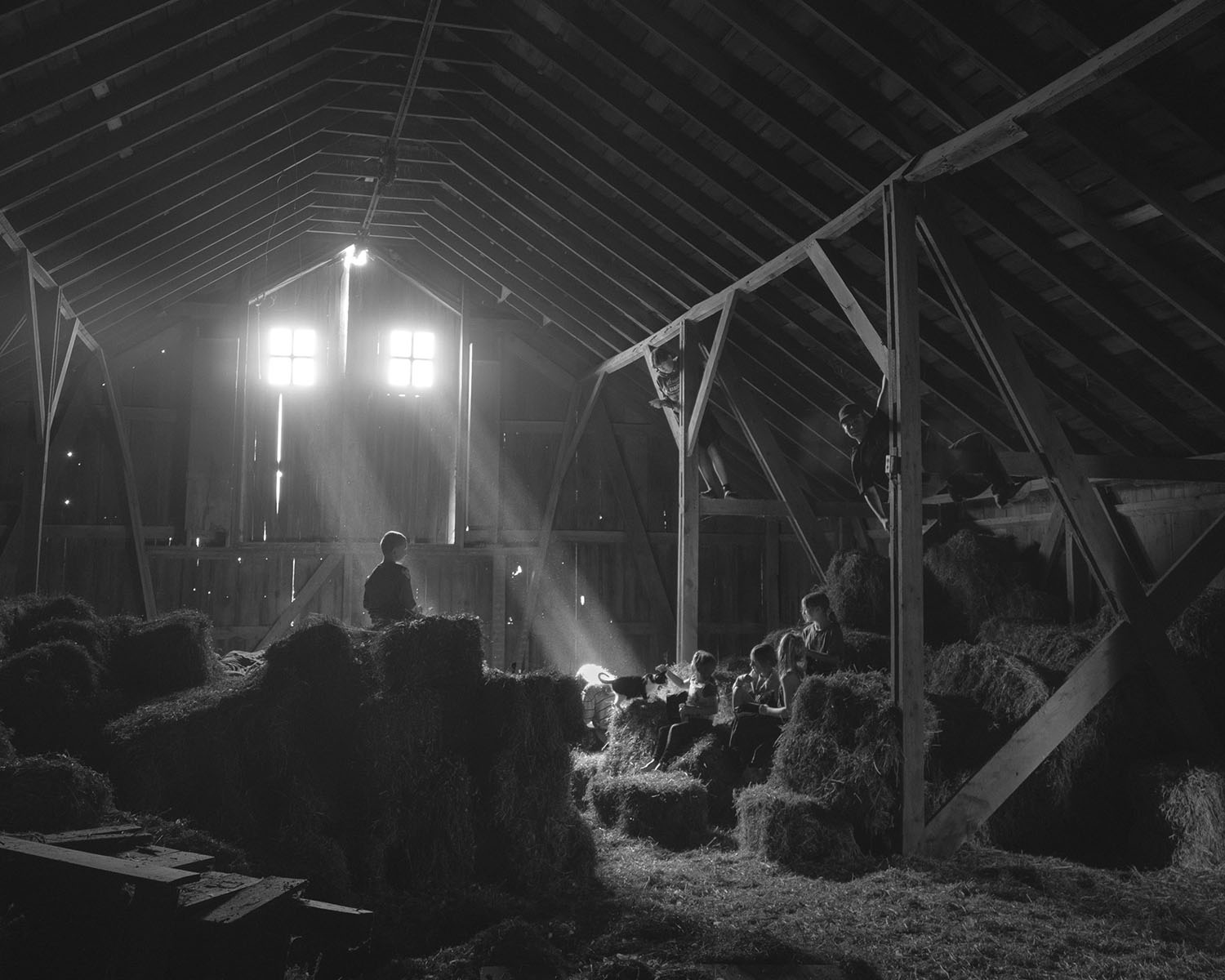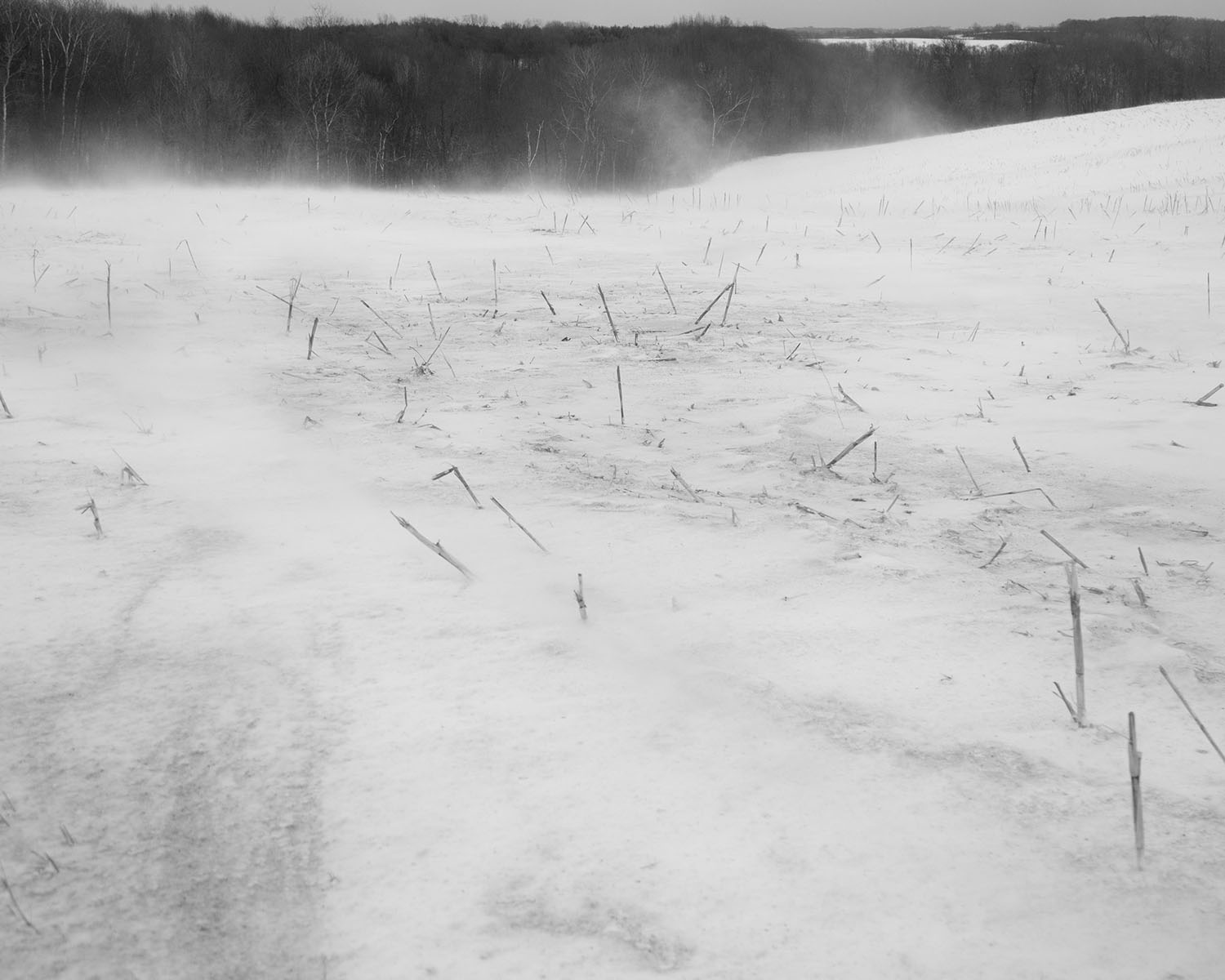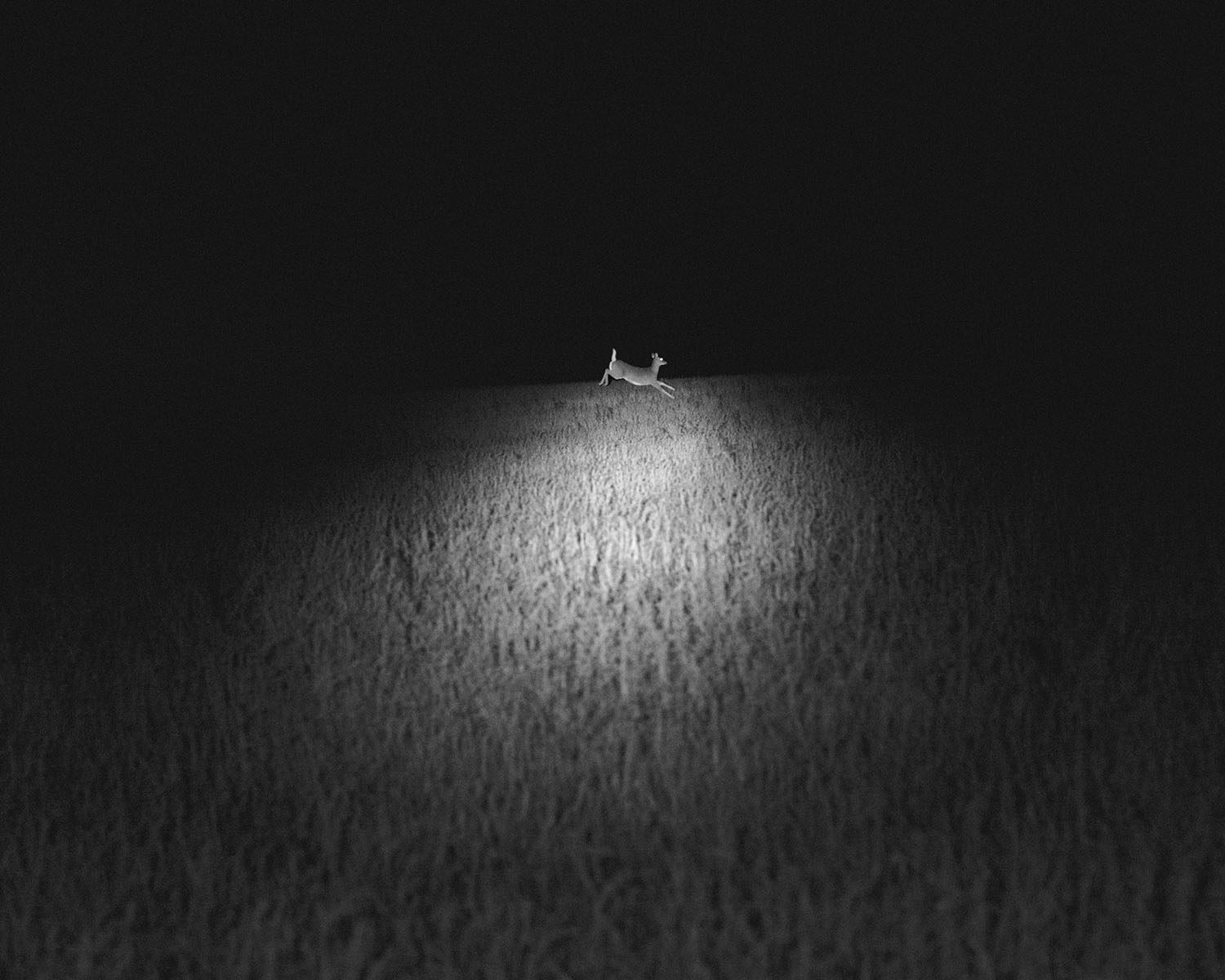Erinn Springer: Dormant Season
In her debut photobook, Dormant Season, from Charcoal Press, Erinn Springer returns to her roots in rural Wisconsin to photograph a familiar but evolving agrarian landscape. Set against the stark winter terrain, Springer leads us to witness the raw contrasting realities of modern Midwest life, a realm where past and present intertwine with fleeting moments of isolation and connection. Outside, things may be frigid and fallow but inside life teems as Springer photographs the intimacy of family, those of stranger’s and of her own.
Erinn and I met in 2022 at the Chico Review and Photobook Retreat where she was working on her edit for this work with the event’s affiliate, Charcoal Press. (Erinn had won their publishing prize the year prior.) I am pleased to have witnessed this series of photographs blossom into book form and to get to dive deeper into the impetus behind the work and discoveries that sprang forth.
The following is a transcript of a conversation between Tracy L Chandler and Erinn Springer.
TLC: You are originally from Wisconsin. What brought you back there? Was photography one of those reasons?
ES: Yes, I grew up in a rural area of northwestern Wisconsin. I went to college in New York City and after 9 years there and abroad, I felt a big impulse to go home to photograph where I’m from. There were a few coinciding forces, , a sudden death and the pandemic being the most prominent,both of which contributed to my desire and ability to make images there. The death imposed urgency, the pandemic provided time.
TLC: Death does impose urgency. It can also heighten attention, make life more salient. What did you notice when you went back home? Was it exactly like you remember?
ES: ….Absolutely. Going home always felt like opening a time capsule. Certain things had changed like friends moving or neighborhood homes being remodeled but my immediate family all lives as they did when I was a kid. I think recent events had made me realize that this, too, would inevitably change, so I wanted to be present to document whatever I could. The camera was able to translate my emotions and my perception of the atmosphere in a way that was perceivable to others.
TLC: The title of the book is Dormant Season yet there is so much life in this work. The weather may be harsh outside but tucked indoors are family dinners and even birds in flight. It shows us that life doesn’t stop when the season goes cold and quiet. How did you get access to these intimate moments? Are the people you photographed your own friends and family?
ES:…The title Dormant Season refers to a sort of anthropological perspective of studying a place during a specific period (all the work was made in the fall and winter) but it also refers to the latent emotions and aspects of ourselves that surface at various times in our lives . The work began with my immediate family but branched out to strangers that I approached at random either through public events, gas stations, or just simply following an instinct to knock on a door while I’d be driving around. I think the energy of a person can be felt even from afar, so there were a lot of farms I’d drive by several times and if I continually felt compelled to learn more, I’d drive up the driveway and introduce myself. Because it was so cold outside, most often, I’d get invited to sit inside to chat. Most of the interiors you see in the book come from these interactions.
TLC: Speaking of life, there is so much NEW life. You have photographs of newborn babies, fawns, puppies, all pointing to what comes after the dormant season, new growth in this ongoing cycle of being. That new life is so tender and vulnerable and your photographs treat them with gentle care. You also show the intergenerational structure that nurtures this new growth. I am thinking of the grandmother with the two girls on the sofa chair. The older woman receiving acupuncture. Did coming home bring a new appreciation for those layers?
ES: Oh, yes, great observation. And thank you! I think those layered relationships have always occupied a large presence in my life and mind. There’s something sweet about the dynamics of a layered family and the contrasts that are present amongst it… we all depend on each other. And it’s almost like one thing can’t be complete without the other. The acupuncture moment on the older woman (my mom) happened as a result of an activity she was doing with my sister’s kids. Grandma (mom) was holding the rope for apony, the pony took off, grandma held onto the rope and dislocated her shoulder. My sister then gave her acupuncture, which led to this image. We laugh about it, but it’s pretty typical. We’re all deeply connected, from one thing comes another. Whether talking about the seasons and natural world or events like this with my family, having a camera allows me to reflect on these interactions.
TLC: Earlier you mentioned the camera helped you “translate emotions and perceptions”. Can you talk more about that? Why did you choose to present the series in black and white?
ES: Photographing seemed to make order of the otherwise errant emotions I felt around my experiences at home. Emotions swirl around in my head and nothing seems to make sense until I make something tangible through words or photographs. As for the black and white, it never crossed my mind to make this work in color, nor was I drawn to color work at the time I started making these pictures. Black and white is a dialect within the language of photography that had the most direct translation to these thoughts and feelings I used as material.
TLC: I get that. It sounds like it just felt right. To me, black and white can bring a sense of nostalgia, like we are looking into the past. But I guess that notion holds true for all photographs, no matter what technique. We are always looking back in time. What about the book?… How did making the object, with all its connotations of narrative, translate these emotions and perceptions?
ES: Very true. The book feels like a container and messenger for all of the above. Of course, it’s a small edit of the otherwise overflowing experience, but it’s a way to absorb and interpret it. And I love the idea of this book living in the homes of the people I photographed – the white cover will become worn just like the curtains and tablecloths in their homes. I hadn’t necessarily thought about how the object of a book, in its final stage, would become a part of the lives that gave life to IT, but now I’m seeing that relationship and finding meaning in it.
Dormant Season by Erinn Springer is published by Charcoal Press. The hardcover photobook has a cardboard slipcase and is available for purchase through Charcoal Press’s website.
Erinn Springer is a photographer from Wisconsin, USA. She was a nominee for the 2022 Leica Oskar Barnack award, a finalist for the 2022 Taylor Wessing Photographic Portrait Prize, and the recipient of the 2021 PhMuseum Vogue Italia Prize and the 2021 Charcoal Publishing Prize. Her work has been featured in and commissioned by The New York Times, The New Yorker, Die Zeit, M Le Monde, Vogue, and others. Erinn is based between Menomonie, Wisconsin and Brooklyn, New York.
Follow Erinn Springer on Instagram
Charcoal Press is the publishing imprint of Charcoal Book Club, a monthly subscription service delivering curated essential and limited-edition photobooks.
Follow Charcoal Book Club on Instagram
Tracy L Chandler is a photographer based in Los Angeles, CA.
Follow Tracy L Chandler on Instagram
Posts on Lenscratch may not be reproduced without the permission of the Lenscratch staff and the photographer.
Recommended
-
Andrew Lichtenstein: This Short Life: Photojournalism as Resistance and ConcernDecember 21st, 2025
-
Andrew Waits : The Middle DistanceDecember 20th, 2025
-
Aaron Rothman: The SierraDecember 18th, 2025
-
Eli Durst: The Children’s MelodyDecember 15th, 2025
-
Kinga Owczennikow: Framing the WorldDecember 7th, 2025

